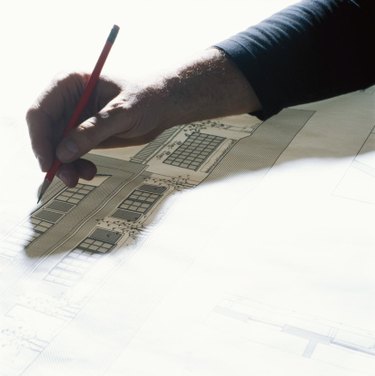
Artists use many different tools to draw pictures. Chalk, pencil, crayon, pen, charcoal and graphite are some of the materials used to draw simple to complex pictures. If you use each tool to draw the same image, each tool will create a unique and different appearance. For many realistic appearing black and white drawings, charcoals and graphite sticks are used. If combined, they both allow an artist to add fine details, shading and textures to a picture.
Step 1
Decide on a subject for your drawing. Set up an area where you can view the subject matter if you're drawing a still life such as a bowl of fruit, a flower vase or wine bottles.
Video of the Day
Step 2
Choose the best type of paper for the project, either rough or smooth. If you are working on a drawing that requires a lot of texture, choose the rough paper. For drawings of people or architecture, consider using the smooth paper.
Step 3
Sketch the subject matter on your paper with a graphite stick or pencil.
Step 4
Look at the different values and textures in the subject matter and decide to keep the background white or shaded. Decide on what degree to shade the background if you want it shaded. Use a soft charcoal if you want a dark background because the soft charcoal will cover the paper faster and easier, make a darker shade than the graphite pencil and give a softer appearance.
Step 5
Select your technique. If the subject matter has a lot of textures and gradations, use both charcoal and graphite in the same picture. Use graphite alone for fine lines, light shading, cross-hatching, skin tones and other intricate details. Use charcoal for soft shading and shadowing, hair, animal fur, eyes and other things that don't require perfect lines.
Step 6
Add details to your picture. Pay attention to the degree of light and dark around the subject and use your charcoal to shade in the darkest areas. Don't use the graphite pencil for shadows because it's shiny and reflects too much light, which may overpower the subject.
Step 7
Blend the charcoal and graphite pencils for texture and variations in shading. Use a tool such as a facial tissue for softening harsh pencil lines and blurring shadows, felt pad for creating textures with a natural appearance, or paper to make textures that separates adjacent objects. You can also blend with a gum eraser if overbearing shadows from charcoal need to be lightened.
Video of the Day